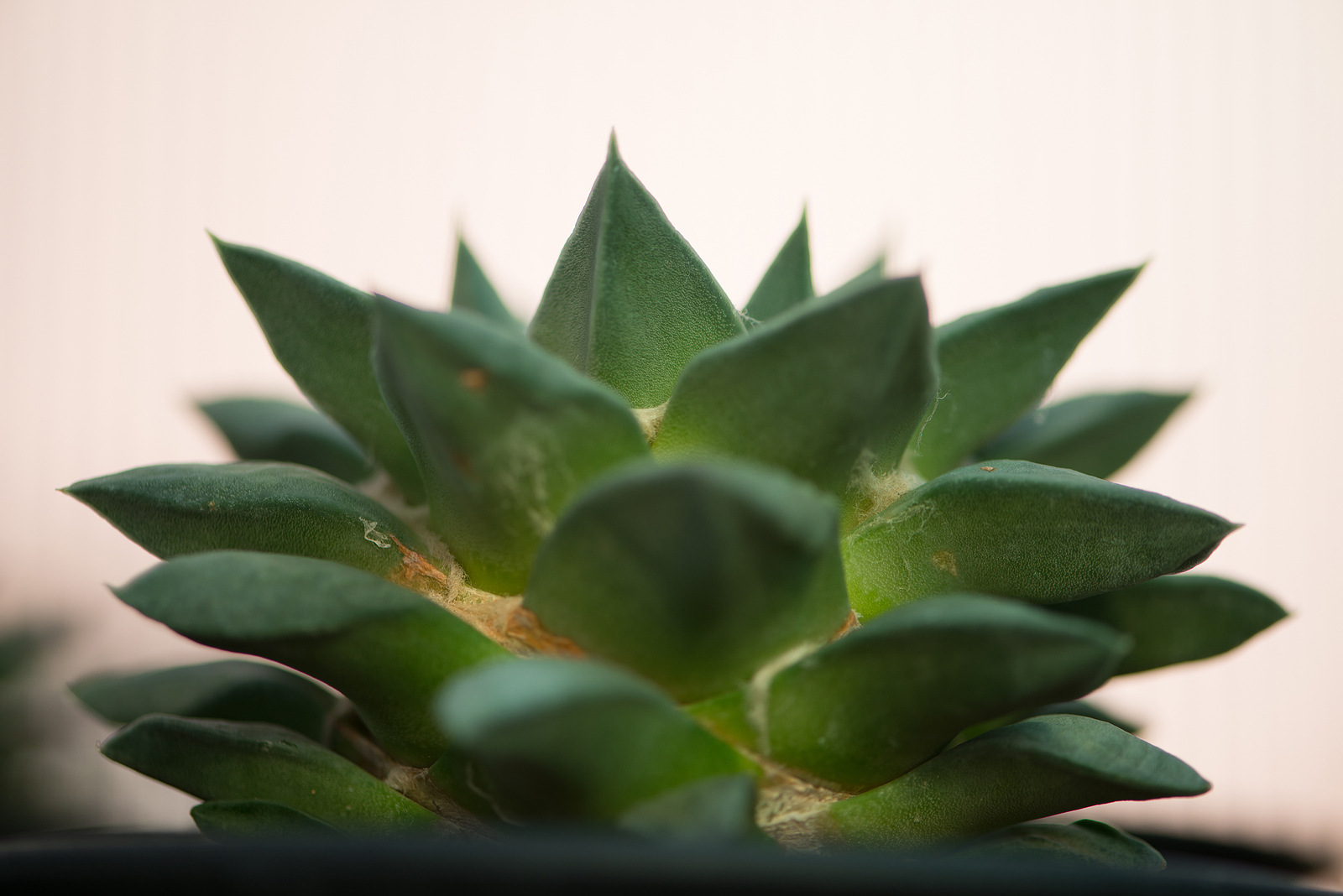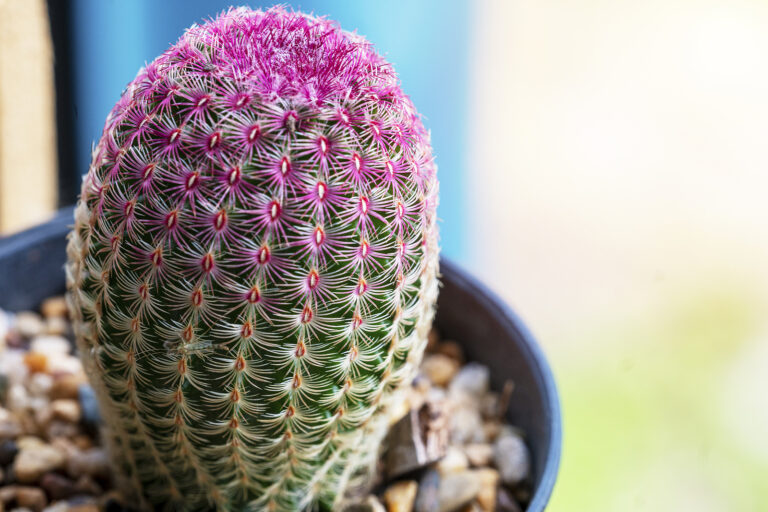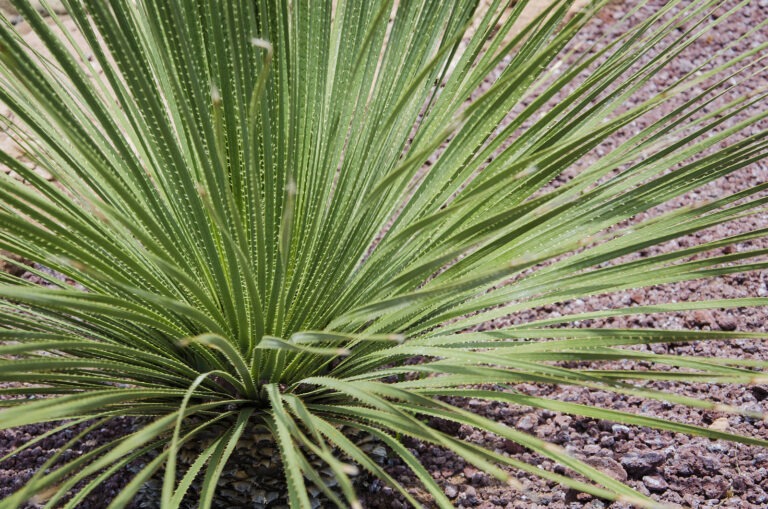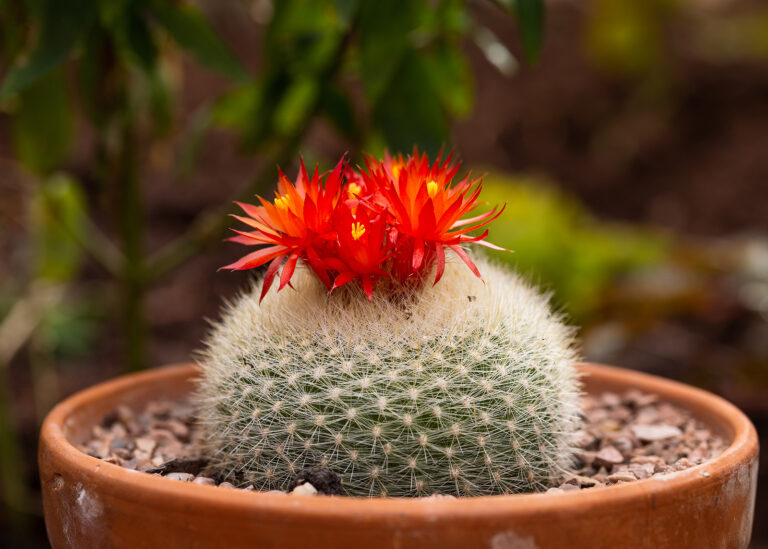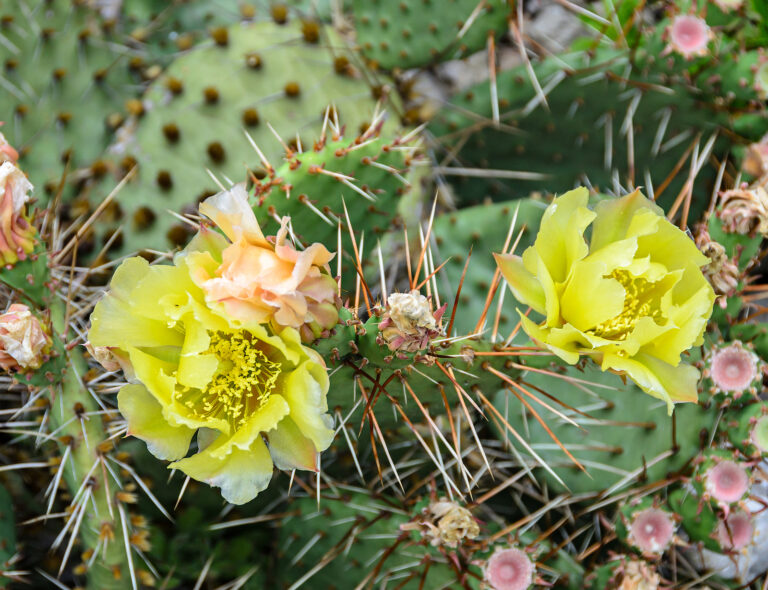How to Grow Ariocarpus – Living Rock Cactus
Ariocarpus–commonly called living rock cactus–are small flattened cacti with a wrinkled, leathery appearance. Ariocarpus range in size from less than an inch across to 12 inches across. Ariocarpus is a rosette of triangular, spineless nodes or tubercles. White, yellow, pink, or purple flowers rise from the crown of the plant.
Ariocarpus are completely spineless. They are usually brown or gray rather than green which gives them a rock-like appearance and thus their common name. They are low-growing and very slow-growing.
Ariocarpus is native to rocky, arid regions of Mexico and parts of Texas.
Get to know Ariocarpus
- Plant type: Cactus, Living Rock Cactus
- Hardiness temperature: 30℉ (-1.1℃)
- Shape and size: Less than an inch to 12 inches across; some may grow to 9 inches tall
- Flowers: White, yellow, pink, or purple flowers grow from crown of plant
- Bloom time: Spring or autumn
- Common name: Living rock cactus, seven stars
- Genus name: Ariocarpus
- Family name: Cactaceae
- Origin: Mexico
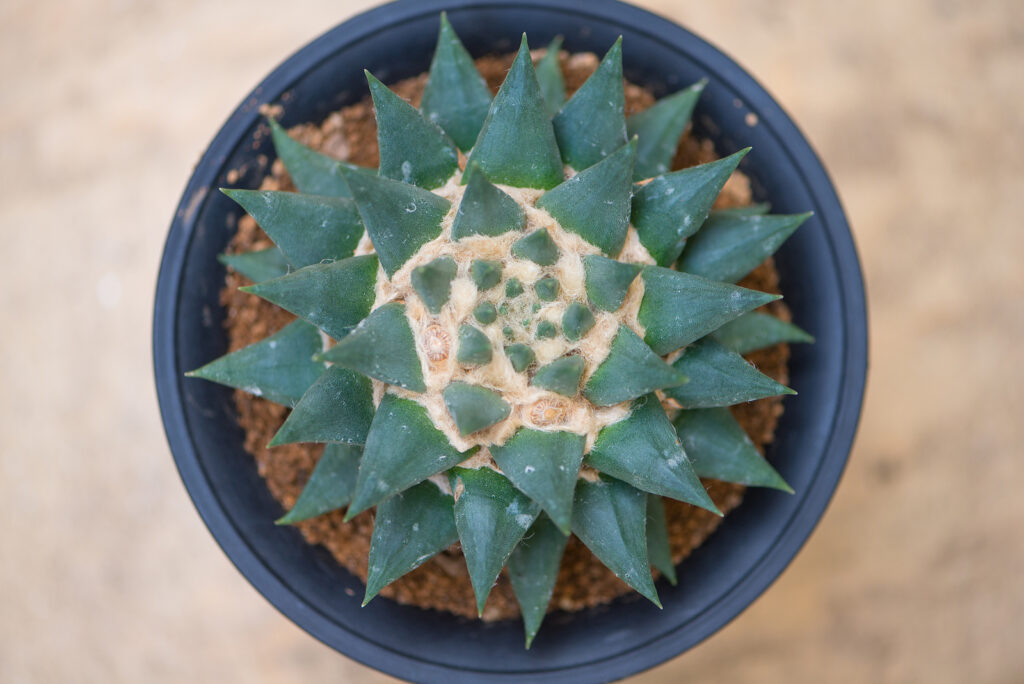
Planting Ariocarpus
- Ariocarous are very slow growing unless grown in full light and warm temperatures.
- Ariocarpus require coarse, well-drained potting soil.
How to water and feed Ariocarpus
- Artocarpus should be watered infrequently.
- Feerd Ariocarpus with a cactus fertilizer during the growing season.
Ariocarpus care
- Ariocarpus has a thick tap root; it will require repotting regularly to ensure the best growth.
- Ariocarpus will not bloom if it is unhappy with light or water.
Ariocarpus species to grow
- Ariocarpus agavoides. Long, leathery tubercles are greenish-brown and flat; flowers are deep magenta and appear in late autumn.
- A. fissuratus (living rock, star cactus). Flattened globe of spreading, dirty green tubercles; the top surface is furrowed or grooved, parallel to the outer edges of the plant; rose pink flowers may appear in spring.
- A. kotschubeyanus. Pointed, flat tubercles covered with wool create a pattern. A. k. macdowelli has deep magenta to purple flowers, 1 inch wide.
- A. retusus (seven stars). Three-sided tubercles form a triangular rosette; surface is wrinkled grayish brown, and slightly concave; flowers are white, occasionally trimmed in pink.
- A. scapharostrus. Similar to A. agavoides except tubercles are more erect.
- A. trigonus. Largest species grows 9 to 12 inches across; tubercles are greenish-gray, shriveled, and form an elongated pyramid; two-inch flowers are yellow or dark cream-colored.
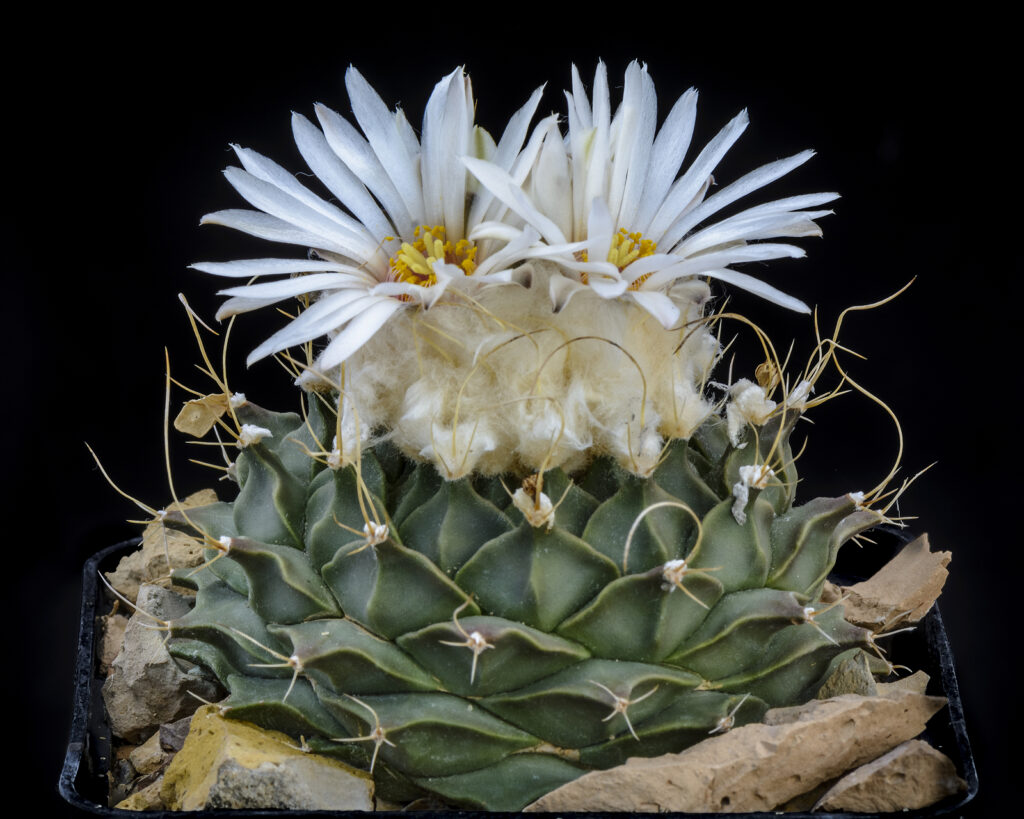
Other Ariocarpus genera
- Aztekium ritteri. Small, flattened, globular cactus with low, 3-edged, cross-furrowing ribs; areoles form a woolly midline on each main rib; depressed crown produces thick spines; but as plant ages, spines fall off; ½-inch wide flowers are white.
- Lophophora williamsii (peyote). Spineless, blue green body has a flattened crown; body tapers into a thick tap root; older specimens have transversely furrowed tubercles and areoles that bear tufts of fine hair; flowers are pale pink, rarely white.
- Obregonia denegril. Turnip-shaped cactus with rosette of leaflike tubercles; white flowers and fruit are nearly hidden among white wool; spines are curved and small.
- Pelecyphora assellformis (hatchet cactus). Dark gray green, hatchet-shaped tubercles do not overlap; tiny spines (about ¼-inch long) are flat, barely visible; flowers are deep rose.
- Pelecyphora strobiliformis (Encephalocarpus strobiliformis) (pine cone cactus). Globular shape; areoles, appear at tips of tubercles, produce long spines; flowers are rose-colored or magenta.
- Strombocactus disciformis. Partially globose body—about 3 inches thick; covered with ¾-inch-wide tubercles that are curved upward and slightly ‘’winged’’ looking; white or cream-colored flowers appear from center of the crown.

